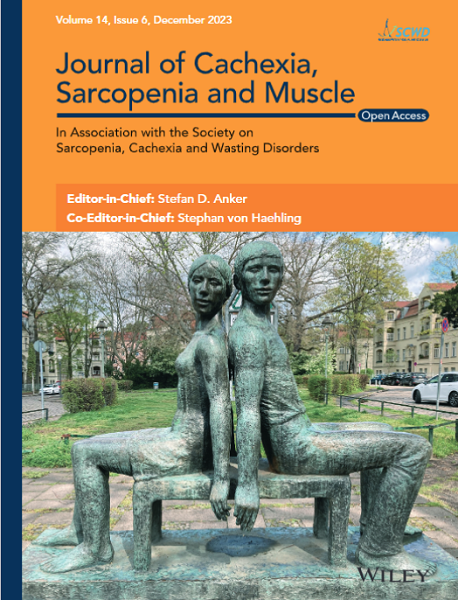Peripheral Thyroid Hormone Sensitivity Mediates the Association Between Body Composition and Diabetes in Euthyroid Adults
Abstract
Background
Body composition parameters, including fat-to-muscle ratio (FMR) and appendicular skeletal muscle mass (ASM), are closely associated with metabolic diseases. However, the mediating role of peripheral thyroid hormone sensitivity, reflected by the free triiodothyronine-to-free thyroxine ratio (FT3/FT4 ratio), in these associations remains unclear in euthyroid individuals. The current study aimed to investigate the associations of FMR and ASM/BMI with diabetes and to explore the potential mediating role of FT3/FT4 ratio in these relationships among euthyroid Chinese adults.
Methods
This cross-sectional study enrolled the participants from 10 communities in Guangdong Province, China, from November 2021 to September 2022. Body composition was measured using bioelectrical impedance analysis (BIA). Diabetes was defined based on fasting plasma glucose, 2-h postload glucose or glycated haemoglobin (HbA1c). Associations of FMR and ASM adjusted for body mass index (ASM/BMI) with diabetes were assessed using multivariable logistic regression. Structural equation modelling was applied to evaluate the mediating effect of FT3/FT4 ratio.
Results
A total of 5089 participants (mean age = 46 years, SD = 12) were included in the final analysis, consisting of 1957 men (38.5%) and 3132 women (61.5%). Participants in the third tertile (T3) of FMR exhibited a 79% higher prevalence of diabetes compared to those in the first tertile (T1) (OR 1.79, 95% CI 1.27–2.54) (p < 0.05). Conversely, those in the T3 of ASM/BMI had a 56% lower prevalence of diabetes compared to participants in T1 (OR 0.44, 95% CI 0.31–0.64) (p < 0.05). Restricted cubic spline analysis confirmed linear associations for both FMR and ASM/BMI with diabetes (both p for overall < 0.001; p for non-linear > 0.05). FT3/FT4 ratio significantly mediated the association between ASM/BMI and diabetes, accounting for 4.6% of the total effect (p < 0.05), whereas no significant mediation was observed in the FMR–diabetes pathway (p > 0.05).
Conclusions
In euthyroid individuals, higher FMR and lower ASM/BMI were independently associated with increased diabetes prevalence. The inverse relationship between ASM/BMI and diabetes may be partially mediated by FT3/FT4 ratio, highlighting peripheral thyroid hormone sensitivity as a potential mechanistic biomarker linking ASM loss to glycaemic dysregulation in euthyroid individuals.


 求助内容:
求助内容: 应助结果提醒方式:
应助结果提醒方式:


